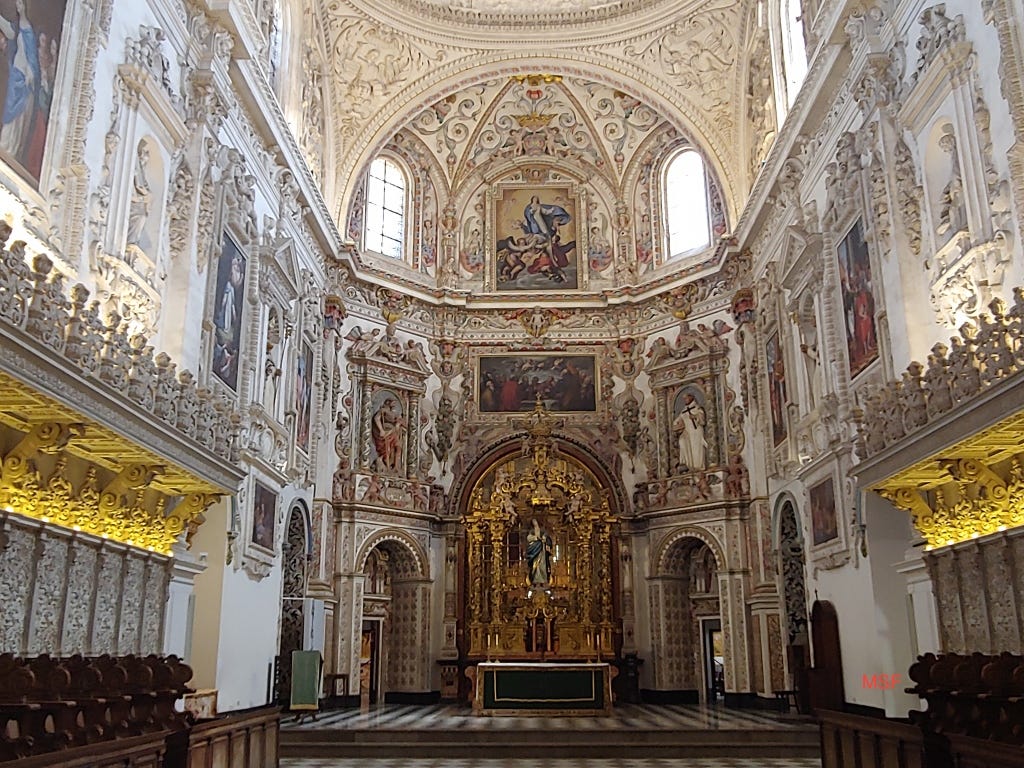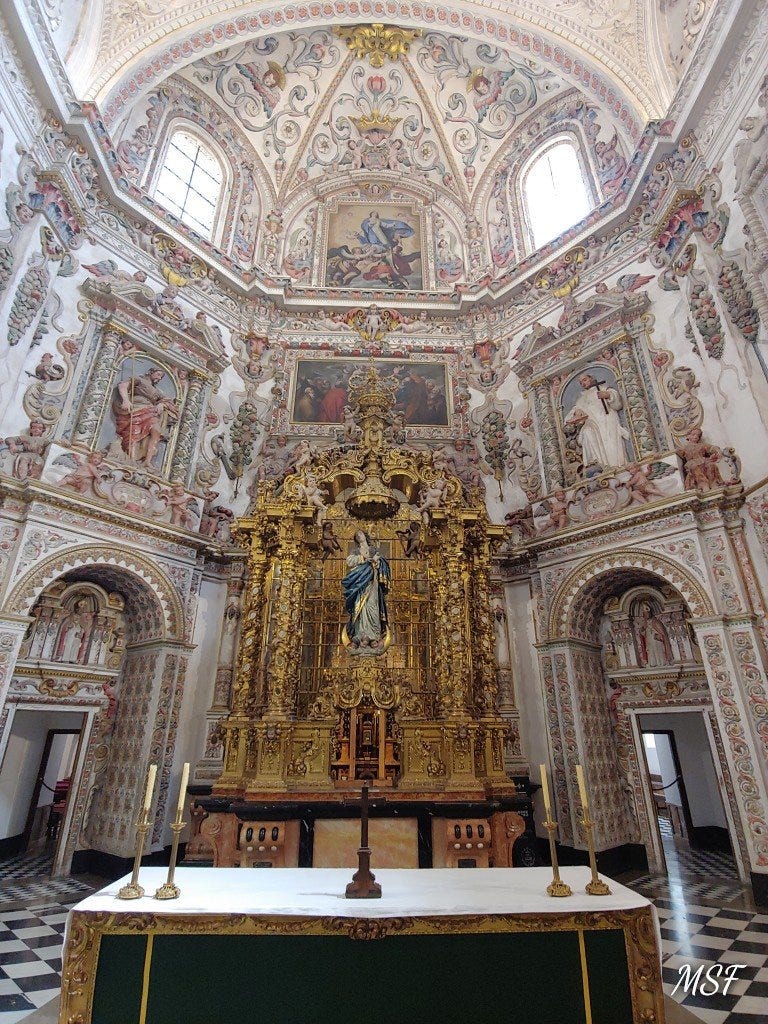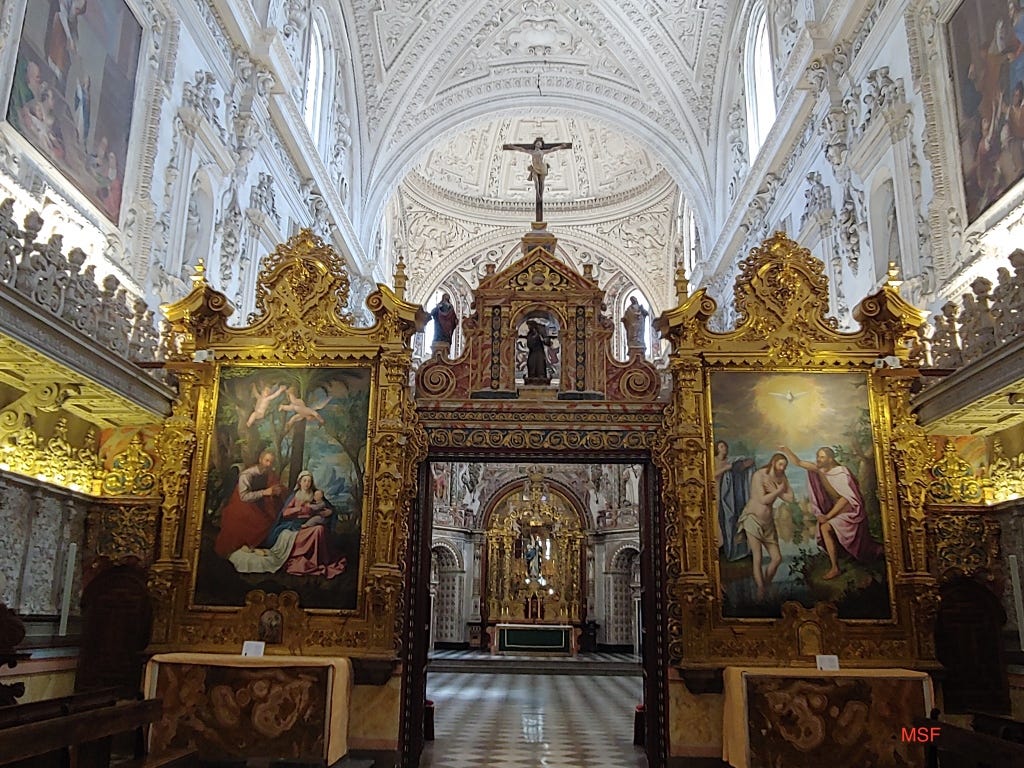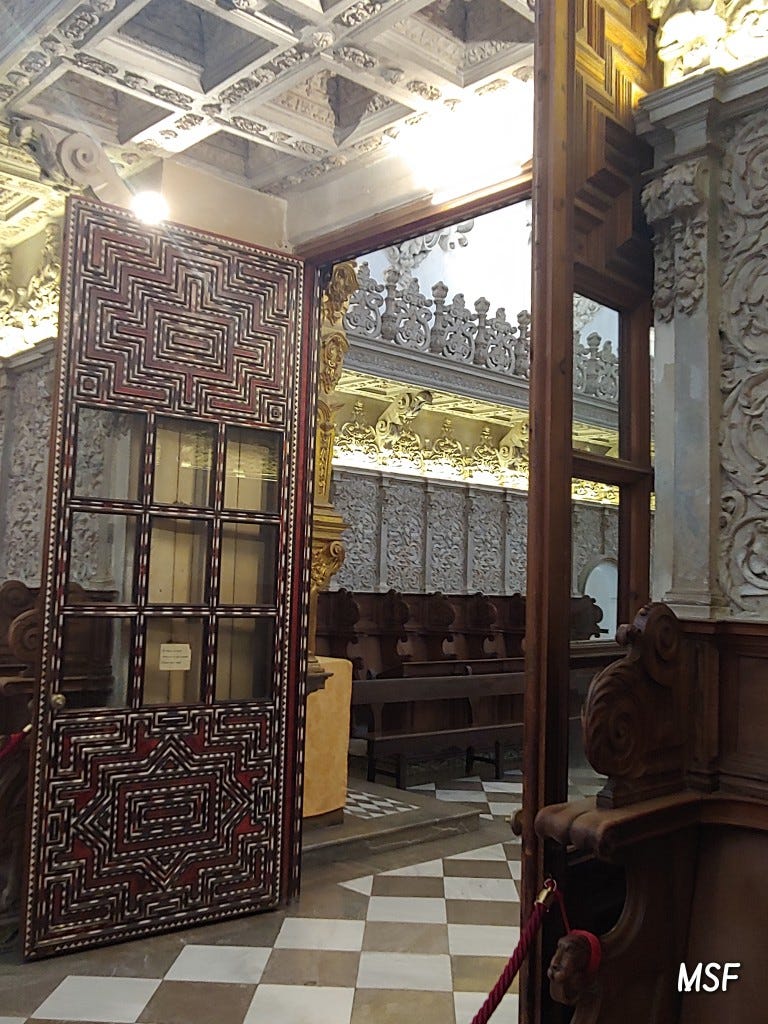Main altar of the Church of the Cartuja of Granada: General view.
It is undoubtedly one of the greatest jewels of this Monastery. Its construction was begun by Cristóbal de Vílchez in the 16th century and was not completed until 1662.
Apparently, the original plan included four towers at the corners of the nave, but only one was built. Inside, it has a single nave, with a richly decorated groined ceiling.
Main altar. General view.
The main altar is a gilded wooden altar-baldachin, which reveals the large glass window that separates the presbytery from the Holy of Holies within a semicircular arch. The baldachin, made by Francisco Hurtado Izquierdo (18th century), houses an Assumption by the sculptor José de Mora.
View of the Church from the gate that divided the Carthusian monks' area from the lay monks' area. Taking into account that Cartujos can’t speak but on very rare occassions, this distinction was needed as lay people weren’t at all bound by that obligation.
The nave is divided into three sections: the faithful area, separated from the rest by a low railing, the lay area, and the Carthusian monks area.
Access door from the worship area to the lay area. Cartuja Church of Granada. We saw the lay area yesterday.
Fantastic paintings by Sánchez Cotán and Pedro Atanasio Bocanegra decorate this beautiful church, where the unique white color of its Baroque plasterwork envelops the visitor and transports them to a place beyond the stone.
Original post in Spanish in Wordpress.
Buy me a coffee. ☕️







